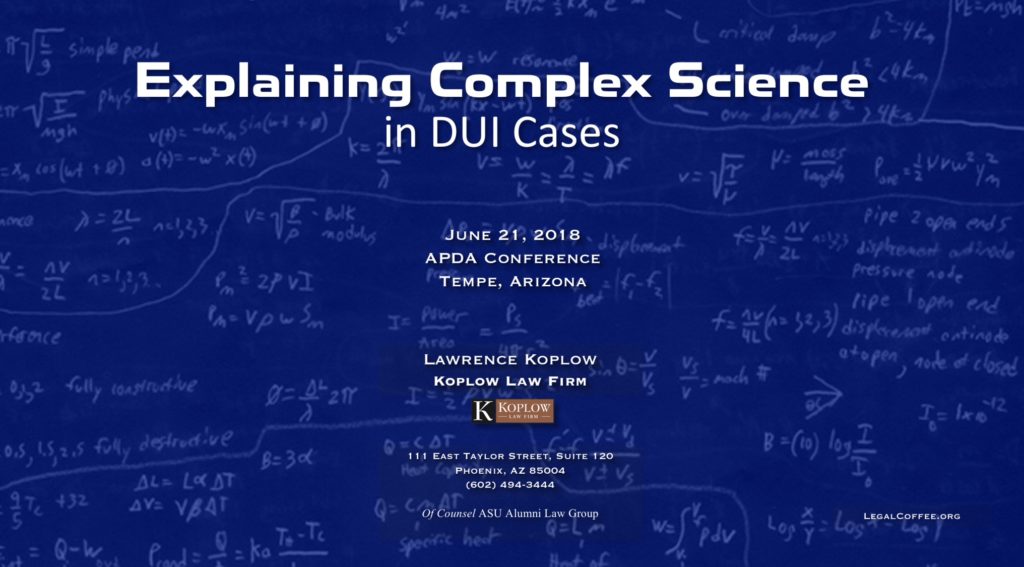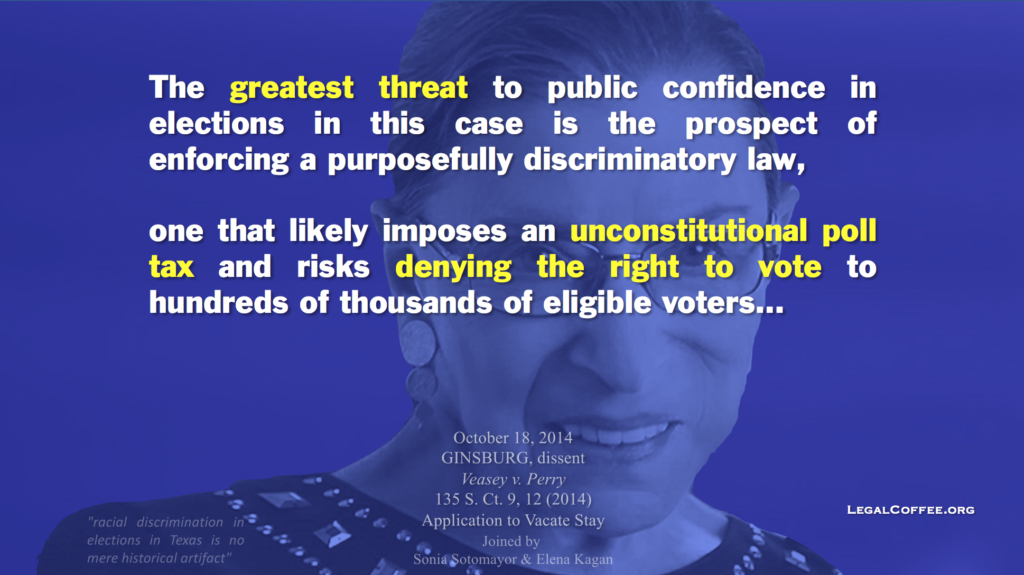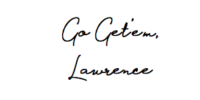PRESENTATION: The Limitations of Drug Testing
Thank you to everyone who attended my presentation last week at the AACJ’s 32nd Annual DUI Conference in Tucson, Arizona (May 3 – May 4, 2019). As promised to those who attended, here are my presentation materials converted in a series of videos.
NUMBER 1/3
NUMBER 2/3
NUMBER 3/3
FORENSIC SCIENCE: Calibrator Concerns in Blood Alcohol Testing [DUI]
The ability to measure the amount of alcohol in a blood sample is fundamental to determining if a person violated the law. DUI laws usually prohibit exceeding a certain amount of alcohol in a person system. This task requires that a laboratory develop a measurement system.
Within that measurement system is a machine called a gas chromatograph. The machine performs two primary tasks: (1) it separates the substances within a sample; and then (2) measures how much of each substance is present.
The machine doesn’t inherently know how to identify any specific substance. It must be taught. This process is known as calibration. This is accomplished using calibrators. A calibrator is known and specific amount of alcohol. Here, the term means the concentration of alcohol (i.e. 00.08) in water.
Each time the machine tests a group of subject samples several calibrators are placed in the machine. These calibrators teach the machine specific alcohol concentrations. This calibration process essentially builds a virtual ruler out of the different concentrations.
However, what happens if the calibrator isn’t what you tell the machine it is? That is, you tell the machine that a calibrator is 00.08, but it’s actually a lower concentration. Before answering that question, consider the stability of an ethanol calibrator.
Evaporation is the process of changing a liquid into a gas. Different substances have different rates of evaporation. Ever use hand sanitizer? Your hands dry faster with an alcohol based sanitizer than when you wash them with water. This is because a gram of alcohol evaporates significantly faster compared to a gram of water.
The evaporation process of alcohol starts when it’s exposed to air. Open your 00.08 calibrator, expose it to air and evaporation begins. If you leave it exposed to air long enough, before using it, then enough evaporation will occur to materially reduce the concentration. Degradation can happen after only a few minutes.

With this in mind, what happens when a degraded calibrator is used to teach a machine an alcohol concentration? The machine is taught incorrectly. You have told the machine (entering a value into its software interface) that this calibrator is 00.08 when in reality the concentration is significantly less. Not only has the calibrator degraded but now the machine’s virtual ruler has also been degraded.
Take a look at the above video and it will illustrate what happens when a degraded calibrator is used. You will see that a test result for a subject sample is artificially inflated. Put another way, the test result might incorrectly show a result above a legal limit. And the machine provides no indication the result is wrong. All because the machine had a bad teacher.
PRESENTATION: Explaining Complex Science to Juries
Thank you to everyone who attended my presentation last week at the APDA Conference in Tempe, Arizona [06.21.19]. Here is a PDF and MP4 Video of my Presentation Materials as promised.
EXPLAINING COMPLEX SCIENCE (PDF)
Video of Presentation Materials (MP4)
VOTING RIGHTS: Ginsburg’s Dissent in Veasey v. Perry (SCOTUS)
When Robert Kennedy said:
The most significant civil rights problem is voting. Each citizen’s right to vote is fundamental to all the other rights of citizenship and the Civil Rights Acts of 1957 and 1960 make it the responsibility of the Department of Justice to protect that right.
I wonder if he envisioned that one day our Supreme Court would rule as they did in Veasey v. Perry?
FORENSICS: Blood Alcohol Testing & Temperature
Today, most forensic tests are conducted using a machine. The machine is controlled by software and firmware. The results of a test are printed out for someone to review. Most of us proabably just assume whatever the printouts show is correct.
However, this assumption fails to recognize how much human influence there is on such tests. Moreover, the printed result do not necessarily show if a human misused the machine.
PRESENTATION: Challenging Surrogate Experts
This is Part #1 from my presentation at AACJ’s 31st Annual Aggressive Defense of the Impaired Driver seminar (May 4-5, 2018). The presentation was titled: Challenging Surrogate Experts.
CASES DISCUSSED
Melendez-Diaz v. Massachusetts
PRESENTATION: Chemical Testing in Arizona DUI Cases
Here are the slides from my March 30, 2018, presentation converted into an MP4. This was an in-house CLE presentation at the Beus Center for Law and Society.
Failure
A terribly effective method of avoiding success is to grade it based on a fantasy.
It’s a fantasy to think the best team always wins. It’s a fantasy to think everything, or even most things, in life are fair. It’s a fantasy to think the best performance always wins or even gets immediate gratification.
Vincent Van Gogh is considered one of the greatest artists of all time. It’s a shame no one ever told him. As many historians report, Van Gogh only sold one painting during his life – Red Vineyard at Arles. He never knew what would be his future recognition.
There is a truth from Van Gogh’s life worth remembering. Did Van Gogh’s work only become great after he was dead? Of course not. We just didn’t see it. It was great the whole time. I wonder what would have happened to Van Gogh if he could have seen then – what we all see in him now.






